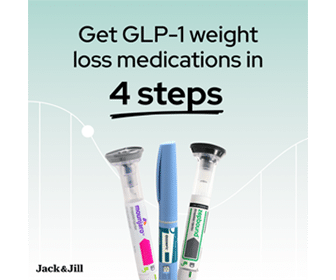How to use the right amount of reps, sets, and weight to find the volume that builds muscle? The volume places muscles under optimal stress to grow muscles. Regardless of how you see it, volume load is one of the best ways to build muscle in the gym. An impressive body is created in the kitchen, not the gym. Once you get into the kitchen, it is not even close. Can I whisper it? Okay, I will scream it – PROTEIN, PROTEIN. I love protein! Let’s move on now.
You can use volume to get excellent results and pack on the muscles.
This article gives you the information you need to get results and how to use volume load to build muscle fast. We don’t want to waste your time, so we will provide you with just the nuts and bolts to keep it simple with only the relevant facts. The goal is to provide you with scientifically backed research to support what you do in the gym. When you combine your determination with scientific facts, you get premium results. So let’s get you those results!
What is a volume load?
The math definition of volume load is weight x sets x reps. But that is the easy way out. The math tells us there is a correlation, a direct relationship between the amount of weight you lift, the sets, and repetitions you perform. But do you need math to tell you that? After all, it doesn’t take much to figure out the difference between lifting 250 pounds three times and lifting it eight times.
So what is volume load trying to tell you? Do the details matter, or is it all about the big picture? The answer is yes and no. The facts do matter, and it is all about the big picture. How can we have it both ways? The answer is simple. Without the details, there would not be a big picture. The ultimate message of a volume load is to pick up as much weight as you can, as many times as possible, and if you do, you will get results! A volume load is a composite index. A composite index is one number that represents many things. Other fitness composite indexes are weight and BMI.
How do you use a volume load to build muscle?
Even though the volume load is about the big picture, you have some magic numbers inside the big picture. You must reach these numbers to build muscle.
A volume load that uses a rep range from 6 to 12 builds muscles:
Research shows muscle hypertrophy activates between 6 to 12 repetitions for each set. If you do less than six reps, you are training for strength. If you do more than 12 reps, you are training for endurance. Also, this happens because of the energy needed to lift 6 to 12 reps of heavyweight (70% – 85% of 1RPM). The body has three energy pathways and sources of energy. The energy pathway and energy source that causes muscle hypertrophy is the glycolytic energy pathway, and it uses glycogen for power. Glycogen is stored in the muscle, much like keeping gas in a vehicle’s gas tank. By forcing your body to use more glycogen, you force your body to grow bigger muscles to store more glycogen. This process is an adaptation process that the body uses to respond to weightlifting caused by glycogen depletion.
A volume load based on your one-repetition maximum builds muscle:
Unlike the reps, the amount of weight to lift for each repetition differs for everyone. But everyone uses the same parameters to determine the weight. You base the weight you lift on your one-repetition max (1-RPM). Your 1-RPM is like your social security number or fingerprint. It defines you in the gym. If you are serious about building muscle, you must regularly know and test your 1-RPM. How often you test your 1-RPM depends on your experience level and growth rate. A person starting with fast gains should check their 1-RPM monthly. In contrast, an experienced person with slow, steady gains should check their 1-RPM quarterly or semiannually.
A volume load based on the weight lifted builds muscle:
The key to building muscle is to apply the right amount of stress to the muscles. While you may fix the sets and reps in stone, the weight is not. So how do you determine the right amount of weight to get the stress you need to build muscle? Research shows to build muscle; you must lift 70% – 85% of your 1-RPM. Here is a chart that combines the reps required with the percentage needed to place the maximum amount of stress on the muscles:
For example, if your 1-RPM on the bench press is 300 pounds, and you want to do ten reps per set, you would use 225 pounds (300 pounds x 75%) to get the optimum weight to lift. If you want to do 12 reps, you will use 210 pounds (300 pounds x 70%) for each rep. Also, if you find that the weight is easy, then work on your form. Focus on the concentric, eccentric, and isometric portions of each rep. Less than 2% of the population lifts outside the maximum percentage range, and 2% has the body to prove it. Everyone lifting outside the maximum percentage range is cheating on the form, using steroids, or resting too long. Some forms of cheating include bouncing the weight off the chest or ground, completing the eccentric portion of the exercise too fast, performing half the range of motion, and taking longer rest breaks. When you cheat, you cheat on yourself and nobody else.
A volume load is based on 3 to 6 sets for each exercise.
The sets for each exercise must be between 3 to 6 sets. There are some exceptions to these guidelines for experienced bodybuilders close to their genetic potential. You can increase the above to six sets, as with German Volume Training workouts. Lower body workouts can build muscle on a minimum of three sets, while upper body workouts require higher sets. Also, compound lifts can stimulate muscle growth on three sets, while isolation lifts require more sets. Perform three sets on lower-body and compound lifts and six sets or more on upper-body and isolation lifts.
The number of sets performed in each workout determines how many times you need to work the muscle each week. You must complete 10 to 15 sets targeting that muscle each week to build muscle. Therefore, if you do a workout with three chest exercises for four sets each, you only need to work that muscle once a week because four sets of 3 exercises equal 12 sets. For experienced lifters, this is different because they are approaching their genetic ceiling.
A scientific research study on training for strength and hypertrophy, an evidence approach in 2019, found that there appears to be a window of volume required (greater than ten repetitions and less than 15 sets for each muscle group per week) to create muscular hypertrophy.
The study concluded that frequency, intensity, type, and time (FITT Principle) govern muscle hypertrophy. The volume builds muscles by activating the energy source that causes muscle growth. The glycolytic energy pathway stores glycogen right in the muscle. Just as larger vehicles require larger gas tanks, large muscles require large glycogen cells, as a manner of speaking. Weightlifting volume uses all the glycogen faster than the body can restore it at the cell level. The body loves and depends on glycogen and, as a result, does not like it when a volume load depletes the glycogen in a muscle cell. Therefore, the body uses the adaptive principle to grow larger cells, causing muscle hypertrophy. This process is a defense mechanism to prevent a volume load from depleting the glycogen in a muscle cell. It is a simple process. If you deplete almost all of the glycogen in a muscle cell, the body will grow larger cells to prevent you from doing it again in the future.
A volume load based on a rest time of 60 seconds for each set builds muscle:
You should take your rest time seriously because it affects how much weight you can lift and how many times you can lift it. While your workout stimulates muscle hypertrophy, your rest time causes gains. There are two rest time types: rest time inside the workout and rest time outside the workout. Both kinds of rest are equally important in causing muscle hypertrophy. The optimum rest time for muscle growth is 60 seconds, forcing the body to rely solely on glycogen for energy, not fat or ATP-CP. In addition, rest time between sets determines how much weight or repetitions you can lift for each set.
A scientific research study on the Influence of rest interval length on acute testosterone and cortisol responses to volume-load equated total body hypertrophic, and strength protocols were conducted in 2012.
The study found that using relatively short rest interval lengths (i.e., 60 seconds and 90 seconds) between repeated high-intensity training sets elicits significant acute changes in testosterone concentrations from pre- to post-exercise. In addition, the hypertrophic volume loads produced greater absolute and relative critical testosterone concentrations than the strength volume loads. Also, this was because of a combination of training variables, such as volume load, rest interval length, and exercise selection/sequence.
Resting longer gives you extra energy to lift weight or perform more reps. By resting each set at the same time, you guarantee that your muscles are the only things causing you to lift more weight or do more reps. Increasing rest time during a workout is a form of cheating and gives the illusion that you are getting stronger. Finally, you must base your rest time on your age, genetics, and experience outside of your training. Once muscles have recovered, they must return to the gym and break them down again. Optimizing your rest times (24 – 72 hours) gives you a faster turnaround in the catabolic-anabolic cycle and increases the speed at which you build muscle. Building muscle is a two-way street that involves breaking down and building the muscle back up. You can’t have one without the other. You must take both seriously if you are serious about building muscle fast.
What results can you expect from using a volume load to build muscle in the gym?
If they do it naturally, the average person can add from one to two pounds of muscle a month and fifty pounds of muscle throughout a lifetime. The speed at which you can add muscle is determined by your volume load and how fast you can turn over the catabolic-anabolic cycle. Also, eat plenty of protein and carbohydrates to give your body the fuel and amino acids to build muscles. The proper diet and workout program are guaranteed to get your results. Tracking and analyzing your diet and workout program gives you the additional knowledge to make changes. Changes in your workout cause changes in your muscles. Change is a mandatory part of the process that you must embrace and use to build muscle.
The last word on using volume to build muscle
Building muscle is not magic; it is a science when you know exactly what to do. First, there is a volume load that you must reach to activate muscle hypertrophy. Yes, it is that easy. Volume load is one total number that defines all of your work at the gym. Research has shown that as your volume load goes up, so does the size of your muscles. By following the advice provided in this article, you can find your volume load and use it to make your muscles grow. Before your muscles adapt to your volume load, increase your volume load progressively. Progressive overload training lets you increase your volume load regularly to lift more weight and grow bigger muscles.




